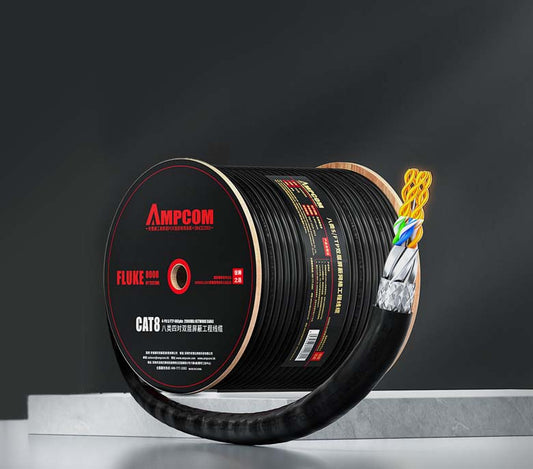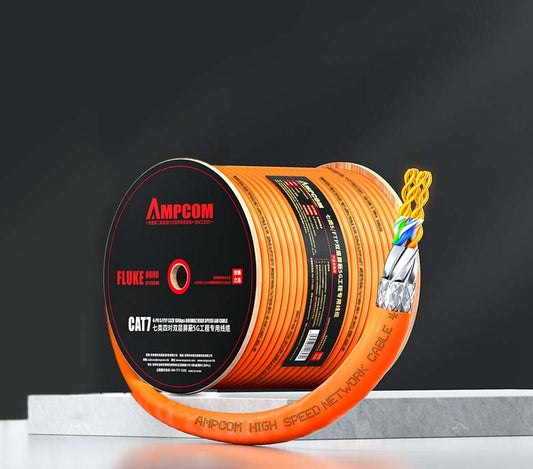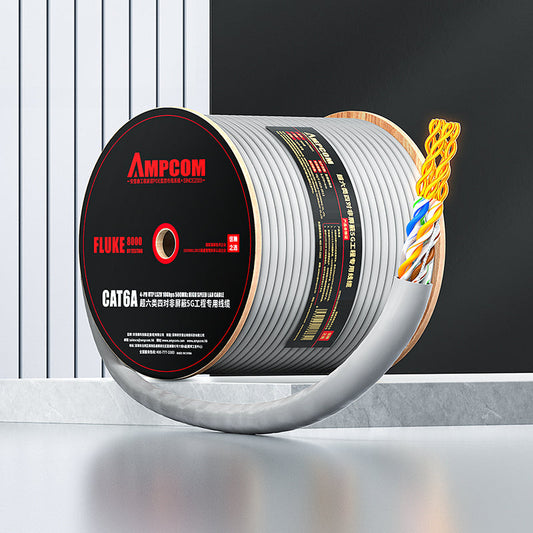How Do Component, Channel, and Permanent Link Testing Impact Your Ethernet Cable Performance?
Understanding the differences between component testing, channel testing, and permanent link testing is critical for maintaining network performance and certification. In this guide, we break down each testing method and explain how they impact your network.
Last updated:
TL;DR
- Component Testing: Verifies individual parts like patch cords and connectors, ensuring proper function before installation.
- Channel Testing: Evaluates the complete signal path from source to endpoint, ensuring real-world performance.
- Permanent Link Testing: Focuses on the fixed infrastructure to ensure long-term data transmission performance.
- Key difference: Component testing is for individual parts, channel testing evaluates end-to-end performance, and permanent link testing ensures long-term reliability.
What is Component Testing?
Component testing focuses on individual network components like patch cords, connectors, and wiring. This test ensures that each part functions correctly before being integrated into the network system. Here's what component testing typically involves:
- Wire Mapping: Ensures each wire is correctly connected to its corresponding terminal, avoiding mismatched connections.
- Impedance Matching: Verifies that the impedance of the cable matches the network's requirements, minimizing signal reflection.
- Signal Integrity: Ensures that the signal remains intact without interference or loss while traveling through the cable.
Component testing is often the first step in network installation and helps catch problems early before installation progresses.
What is Channel Testing?
Channel testing evaluates the entire network link, including patch panels, switches, outlets, and connected devices, along with the cabling. This test simulates real-world conditions by testing the signal’s transmission across the entire path from source to endpoint. Here's what channel testing checks:
- End-to-End Signal Path: Measures performance from the source device (e.g., switch) to the destination device (e.g., computer) to ensure smooth data flow.
- Attenuation and Crosstalk: Ensures signal strength stays within acceptable limits and minimizes interference between adjacent cables (crosstalk).
- Noise Resistance: Tests how well the channel resists external electromagnetic interference (EMI) while maintaining signal integrity.
Channel testing is crucial for validating the network’s performance, especially in environments with high traffic or interference.
What is Permanent Link Testing?
Permanent link testing focuses on the fixed infrastructure of the network, including the horizontal cabling and permanent connections such as patch panels and wall outlets. It excludes patch cords and network equipment. This test ensures that the fixed components of the cabling system can handle high-speed data transmission over long distances. The key elements tested in permanent link testing are:
- Attenuation-to-Crosstalk Ratio (ACR): Measures the difference between signal loss (attenuation) and interference (crosstalk). A high ACR indicates a strong, clear signal.
- Return Loss: Ensures that minimal signal is reflected back to the source due to impedance mismatches, which can cause performance issues.
- Length and Continuity: Ensures that the cabling is the correct length and that there are no interruptions in the signal path.
Permanent link testing is essential for ensuring long-term network stability and is often required for network certification.
Component, Channel, and Permanent Link Testing: Key Differences
While all three tests serve to ensure proper network performance, each focuses on different aspects of the network infrastructure. Here's a quick comparison:
| Test Type | Focus | Purpose | Scope |
|---|---|---|---|
| Component Testing | Individual components like patch cords and connectors | Ensure basic performance of each component | Narrow, focuses on individual parts |
| Channel Testing | End-to-end signal transmission, including active equipment | Simulate real-world conditions and ensure the system performs under load | Comprehensive, checks the entire signal path |
| Permanent Link Testing | Fixed cabling and outlets (excluding patch cords) | Test the performance of the installed cabling system | Medium, focuses on permanent infrastructure |
Each test plays an important role in the network installation and certification process. Component testing identifies early issues, channel testing verifies real-world performance, and permanent link testing ensures the fixed infrastructure can handle high-speed data over time.
Why These Tests Matter for Network Certification
To ensure that your network cabling meets industry standards, these tests are essential. Component, channel, and permanent link testing ensure that your network will support high-performance applications, such as **10GbE**, **PoE**, and **data-intensive tasks**. Failure to conduct or pass these tests could lead to poor network performance, frequent downtime, and costly repairs.
Performing all three tests ensures your network is ready for both current and future demands, helping you avoid potential performance issues and meet certification standards.
Conclusion
Component, channel, and permanent link testing are essential for building and maintaining a high-performance Ethernet network. By understanding the differences between these tests and knowing when to apply them, you can ensure your network performs reliably and meets industry standards.
Whether you’re installing a new network, upgrading an existing one, or troubleshooting performance issues, these tests offer the insights needed to guarantee top-tier network infrastructure. Regular testing and certification are crucial for ensuring that your network supports your business needs and keeps operating smoothly.
FAQs
What is the difference between component, channel, and permanent link testing?
Component testing focuses on individual elements like patch cords, channel testing evaluates the entire signal path, and permanent link testing ensures the fixed infrastructure can handle high-speed data transmissions.
Why is channel testing necessary for 10GbE networks?
Channel testing ensures the network performs under real-world conditions, which is critical for high-speed networks like 10GbE.
Why should I perform permanent link testing?
Permanent link testing ensures that the cabling infrastructure can handle high-speed data over long distances, ensuring long-term network stability.
How do I ensure my network cabling meets industry standards?
Perform component, channel, and permanent link testing while adhering to TIA/EIA standards to ensure your network is compliant and performs optimally.
Next Steps
Ensure your network installation passes component, channel, and permanent link tests to guarantee performance. Start with a thorough survey, deploy multi-gig switches, and tidy patching for best results.



